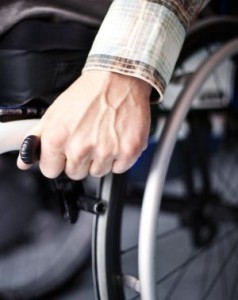Advances in fight against progressive paralysis
FAU researchers make new discovery using patient stem cells
In some cases it starts in childhood, in others in early adulthood, with unsteadiness while walking and a feeling of weakness in the legs. Over time, the legs lose even more of their function and the patient becomes dependent on a wheelchair. Due to its causes, there is currently no treatment for hereditary spastic paraplegia. The Junior Research Group III of the Interdisciplinary Centre for Clinical Research (IZKF), an independent BMBF neurosciences research group led by Prof. Dr. B. Winner, has taken an important step towards changing this with the help of a Tom Wahlig Foundation scholarship for hereditary spastic paraplegia (HSP).
HSP is something patients are born with, since the cause is often a hereditary mutation of certain genes. The most common form stems from a mutation of the SPG4 gene, which is responsible for the production of the protein spastin. As part of a research project, a small skin biopsy was performed on the upper arms of patients and healthy individuals at the Department of Molecular Neurology at Erlangen Universitätsklinikum. These skin cells were placed in culture dishes and transformed into pluripotent stem cells, which can develop into any type of cell.
The research team then further differentiated these pluripotent stem cells into nerve cells for the patient’s body. Comparing healthy and diseased nerve cells, they were able to determine that the diseased cells had shorter processes that were less ramified than those of healthy cells. Additionally, the transport of certain small organelles in the cells, the mitochondria, is reduced, which impairs nerve cells in the long run. The HSP-affected cells lack the protein spastin, which plays an important role in cell division and in the stability of the nerve processes. The scientists were able to ‘heal’ the diseased nerve cells by inserting a copy of a ‘healthy’ SPG4 gene into the cell.
Though this procedure cannot immediately be used to treat patients, it is the first time that scientists have succeeded in examining the disease in patients’ own nerve cells in a laboratory. ‘We hope that the establishment of such disease models will lead to new substances being tested on the basis of human cells and thus allow us to help our patients,’ says Prof. Dr. B. Winner, head of the Junior Research Group III at the IZKF.
The project was led by the IZKF research group’s doctoral candidate, Steven Havlicek, and was carried out by the IZKF institutions of Universitätsklinkum and FAU (Prof. J. Winkler, Prof. A. Lampert, Prof. U. Schlötzer-Schrehardt) in collaboration with the Salk Institute for Biological Studies in La Jolla, California.
Further information:
Prof. Dr. Beate Winner
Phone: +49 (0)9131 85 39301
beate.winner@med.uni-erlangen.de
